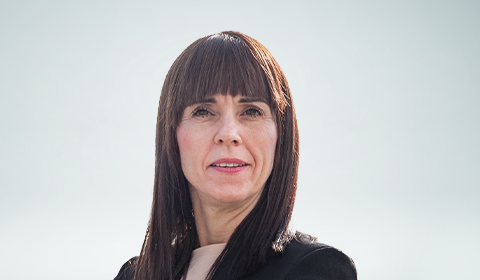Bancassurance is a key, if not the lead, distribution channel in many countries around the world, particularly in Europe and Asia.
The global bancassurance market reached nearly $1.3 trillion in 2021 and it is expected to exceed $1.8 trillion by 2027, representing a CAGR of 5.9% over those five years.[1] To compete in the years ahead, insurers will need to take steps now to capitalize on the rapidly evolving bancassurance landscape.
The Move to Omnichannel Distribution
Historically, agents in bank branches could sell life insurance products to customers who visited the branch to do everything from depositing a check to taking out a loan. The rise of telephone-based and then mobile banking has reduced the number of people visiting bank branches to a fraction of what it used to be. This has led to thousands of bank closures globally, a trend that was only accelerated by the COVID-19 pandemic. In addition, while mobile banking was concentrated in younger people in the past, recent data suggests increased demand for digital transactions among all age groups.[2]
Fewer customers coming to bank branches means fewer opportunities to sell bancassurance in person through agents, potentially leaving many would-be policyholders without the insurance coverage they need.
To address this protection gap, life insurers are adopting an omnichannel approach to bancassurance that includes digital solutions of their own.
The goal in making this transition is to develop techniques and technologies that increase efficiencies through omnichannel distribution while maintaining – and even building on – the key benefits that come from engaging with an agent. For example, the level of automation and amount of financial and other data now available to mobile banking apps enables them to make personalized, tailored product and coverage recommendations for consumers, a service once reserved for in-person sales.
See also: Alternative Distribution Evolution and Opportunities
Beyond Bancassurance
Personalized insurance offers that leverage bank data to better understand customer needs and to enhance risk assessment and selection can benefit the customer, the bank, and the insurer alike. Incorporating the insurance offer directly into the bank customer’s journey – such as during a mortgage application – can make the sales process as frictionless as possible, perhaps even expected. Certain circumstances allow for fully embedding insurance within the bank product itself, so that insurance is automatically included in the customer’s purchase. For example, some bank accounts incorporate basic levels of life insurance cover as a customer perk with the option to purchase additional cover.
Operating models between bank and insurer are working to establish seamless coordination in the new omnichannel approach to keep pace with the fast-changing market environment.
Bancassurance partnerships are also accelerating innovation beyond their traditional offerings by providing access to other service providers directly through the banking channel. The goal: to attract new business and to strengthen long-term relationships with policyholders.[3]
In South Africa, for example, an RGA survey revealed that leading bancassurers are investing in insurance-linked wellness platforms and seeking to link wellness rewards to loyalty programs, integrate wellness offerings into mobile banking apps, and introduce gamification strategies. In fact, certain respondents had already implemented or enhanced loyalty programs and incentives to further engage policyholders.[4]
Buying Health Insurance at the Bank
Another major evolution in coverage distributed via bancassurance is the inclusion of health and living benefits products in the insurance mix. In several markets in Europe, Asia, and the Middle East, bancassurance has become an important channel for the sale of individual health products such as medical reimbursement, surgical cash, hospital cash, and dental benefits.
For example, financial advisors in Italy have shifted away from an exclusive focus on their core financial offerings to view insurance protection as part of a 360-degree undertaking. Health products are now being integrated as an important element in meeting the needs of customers. This is driven in part by the rise in freelance workers in the expanding gig economy, who are not covered by group health insurance plans.
See also: 5 Life Insurance Trends to Track in 2022
As with life products, the digitalization of health insurance products is also enabling insurers to enrich them with value-added service components. What has traditionally been a single attachment point with the insured at policy issue is evolving into a continuous, supportive relationship in which the insurer serves as a policyholder’s partner in health.
The insured benefits from a portfolio of services throughout the duration of the policy that may include online medical consults, pharmacy delivery, apps connected to sports and other activities, and even privileged access to specific venues.
A senior critical illness product RGA co-developed with a leading insurer in Portugal provides a good example. The product, which is distributed entirely via bancassurance, covers seven illnesses (cancer, stroke, heart attack, Alzheimer’s disease/severe dementia, Parkinson’s disease, blindness, and paralysis), as well as providing a death benefit of €1,000. It also includes health assistance services, such as home medical care (doctors, nurses physiotherapy, blood tests) and transportation to healthcare facilities. By targeting an underserved consumer segment previously lacking access to such a product, the solution demonstrates how innovative approaches to bancassurance can help close the coverage gap.
Flexibility for the Future
The key to keeping up with – or ideally helping to lead – this ongoing bancassurance evolution is to invest now in omnichannel processes and platforms that can adapt to changing circumstances and capitalize on emerging opportunities. As the foundation of any omnichannel program, efficient, reliable, and flexible underwriting automation is essential.
Whether an insurer-bank partnership is looking to implement a fully automated, direct-to-consumer (D2C) sales journey, provide digital engagement supported with the option of a tele-underwriting team, or integrate automated elements into a traditional, agent-led process, the underwriting platform supporting it all must be architected to adjust to market needs. AURA NEXT, with its REST API* integration option, reflexive questioning, and rules service capable of supporting everything from very simple user journeys to complex, fully underwritten processes, is designed to accommodate an omnichannel approach.
In addition, AURA NEXT can readily incorporate value-added services and automate health insurance sales along with life. The flexible integration options allow bancassurers to provide digital onboarding journeys to customers on almost any device – desktop, tablet, or mobile phone – and in most applications – via website, portal, or mobile banking app. AURA NEXT can also underwrite life and health products with a single application form, making it easier to provide customers with comprehensive cover quickly and easily.
Examples of AURA NEXT bancassurance implementations include:
- A leading European bank built AURA NEXT into its mobile app, offering products with an end-to-end D2C customer journey that include life, critical illness, and disability coverage.
- An insurer in Ibérica is using AURA NEXT to offer life, health, and cancer products via agents as well as D2C channels.
- A Canadian bank is using AURA NEXT to apply a predictive model that assesses an applicant’s risk at the point of sale.
As bancassurance continues to evolve in the wake of COVID-19, winners will be those positioning themselves now, through flexible tools and technologies, to be able to adapt products and processes to meet consumers where they are.
*REST API is a means of presenting content from AURA, including full reflexivity of the applicant interview, while the insurer/bancassurer user has total control over the look and feel of the user journey.





